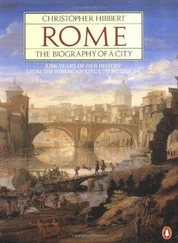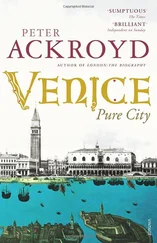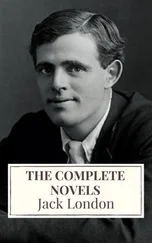Peter Ackroyd - London - The Biography
Здесь есть возможность читать онлайн «Peter Ackroyd - London - The Biography» весь текст электронной книги совершенно бесплатно (целиком полную версию без сокращений). В некоторых случаях можно слушать аудио, скачать через торрент в формате fb2 и присутствует краткое содержание. Год выпуска: 2000, ISBN: 2000, Жанр: Биографии и Мемуары, на английском языке. Описание произведения, (предисловие) а так же отзывы посетителей доступны на портале библиотеки ЛибКат.
- Название:London: The Biography
- Автор:
- Жанр:
- Год:2000
- ISBN:9781400075515
- Рейтинг книги:5 / 5. Голосов: 1
-
Избранное:Добавить в избранное
- Отзывы:
-
Ваша оценка:
- 100
- 1
- 2
- 3
- 4
- 5
London: The Biography: краткое содержание, описание и аннотация
Предлагаем к чтению аннотацию, описание, краткое содержание или предисловие (зависит от того, что написал сам автор книги «London: The Biography»). Если вы не нашли необходимую информацию о книге — напишите в комментариях, мы постараемся отыскать её.
London: The Biography — читать онлайн бесплатно полную книгу (весь текст) целиком
Ниже представлен текст книги, разбитый по страницам. Система сохранения места последней прочитанной страницы, позволяет с удобством читать онлайн бесплатно книгу «London: The Biography», без необходимости каждый раз заново искать на чём Вы остановились. Поставьте закладку, и сможете в любой момент перейти на страницу, на которой закончили чтение.
Интервал:
Закладка:
Around the site of the great Roman fort, at the north-west angle of the wall, there now arise these new fortresses and towers: Roman House, Britannic Tower, City Tower, Alban Gate (which by the slightest substitution might be renamed Albion Gate) and the concrete and granite towers of the Barbican which have once more brought a sublime bareness and brutality to that area where the Roman legions were sequestered. Even the walkways of this great expanse are approximately the same height as the parapets of the old city wall.
The wall then turns south, and long sections of it can still be seen on the western side sloping down towards Aldersgate. For most of its course from Aldersgate to Newgate and then to Ludgate, it remains invisible, but there are suggestive tokens of its progress. The great beast of classical antiquity, the Minotaur, has been sculpted just to its north in Postman’s Park. The mottled and darkened blocks of the Sessions House beside the Old Bailey still mark the outer perimeter of the wall’s defences, and in Amen Court a later wall looking on the back of the Old Bailey is like some revenant of brick and mortar. From the rear of St. Martin’s Ludgate we cross Ludgate Hill, enter Pilgrim Street and walk beside Pageantmaster Court, where now the lines of the City Thames Link parallel those once made by the swiftly moving River Fleet, until we reach the edge of the water where the wall once abruptly stopped.
The wall enclosed an area of some 330 acres. To walk its perimeter would have taken approximately one hour, and the modern pedestrian will be able to cover the route in the same time. The streets beside it are still navigable and, in fact, the larger part of the wall itself was not demolished until 1760. Until that time the city had the appearance of a fortress, and in the sagas of Iceland it was known as Lundunaborg, “London Fort.” It was continually being rebuilt, as if the integrity and identity of the city itself depended upon the survival of this ancient stone fabric; churches were erected beside it, and hermits guarded its gates. Those with more secular preoccupations built houses, or wooden huts, against it so that everywhere you could see (and perhaps smell) the peculiar combination of rotten wood and mildewed stone. A contemporary equivalent may be seen in the old brick arches of nineteenth-century railways being used as shops and garages.
Even after its demolition the wall still lived; its stone sides were incorporated into churches or other public buildings. One section in Cooper’s Row was used to line the vaults of a bonded warehouse while, above ground, its course was used as a foundation for houses. The late eighteenth-century Crescent by America Square, designed by George Dance the Younger in the 1770s, for example, is established upon the ancient line of the wall. So later houses dance upon the ruins of the old city. Fragments and remnants of the wall were continually being rediscovered in the nineteenth and twentieth centuries, when the succeeding phases of its existence were first seen steadily and as a whole. On the eastern side of the wall were found in 1989, for example, eight skeletons of late Roman date turned in different directions; there were also unearthed the skeletons of several dogs. This is the area known as Houndsditch.
It is often believed that the Roman wall first defined Roman London, but the invaders were in command of London for 150 years before walls were built and, during that long stretch of time, the city itself evolved in particular- sometimes bloody, sometimes fiery-stages.
In 55 BC a military force under the command of Caesar invaded Britain, and within a short time compelled the tribes around London to accept Roman hegemony. Almost a hundred years later the Romans returned with a more settled policy of invasion and conquest. The troops may have crossed the river at Westminster, or Southwark, or Wallingford; temporary encampments may have been established in Mayfair, or at the Elephant and Castle. It is important for this account only that the administrators and commanders finally chose London as their principal place of settlement because of the strategic advantages of the terrain, and the commercial benefits of this riverine location. Whether the Romans occupied an abandoned settlement, its tribal occupants having fled on wooden trackways into the swamps and forests, is not known. It seems likely, in any event, that the invaders understood the significance of the site from the beginning of their occupation. Here was an estuary, served by a double tide. So it became the central point for seaborne trade in the south of Britain, and the focus for a network of roads which have survived for almost two thousand years.
The outlines of that first city have been revealed by excavation, with two principal streets of gravel running parallel to the river on the eastern hill. One of these streets skirted the bank of the Thames, and can still be traced in the alignment of Cannon Street and Eastcheap; the second road, some hundred yards to the north, comprises the eastern stretch of Lombard Street as it approaches Fenchurch Street. Here are the true origins of the modern city.
And then there was the bridge. The wooden Roman bridge was located approximately one hundred yards east of the first stone London Bridge, spanning the area west of St. Olav’s Church in Southwark and the foot of Rederes (Pudding) Lane upon the northern bank; the exact date of its foundation cannot now be known but it would have seemed a majestic and even miraculous construction, not least to the native peoples who had settled under the Romans. Half the legends of London arose upon its foundations; miracles were performed, and visions seen, upon the new wooden thoroughfare. Since its sole purpose was to tame the river, it may then have harnessed the power of a god. Yet that god may have been enraged at the stripping of its riverine authority; thus all the intimations of vengeance and destruction invoked by the famous rhyme “London Bridge is broken down.”
It is not clear whether Londinium was first used as a Roman military camp. Certainly it soon became a centre of supplies. In its first stages we must imagine a cluster of small dwellings with clay walls, thatched roofs and earthen floors; narrow alleys ran between them, with a series of streets connecting the two main thoroughfares, filled with the smells and noises of a busy community. There were workshops, taverns, shops and smithies crowded together while, beside the river, warehouses and workshops were grouped around a square timber harbour. Evidence for such a harbour has been found in Billingsgate. Along the thoroughfares, which every traveller to London used, there were taverns and tradesmen. Just beyond the city were round huts, in the old British style, which were used as places for storage, while on the perimeter of the city were wooden enclosures for cattle.
Only a few years after its foundation, which can be approximately dated between AD 43 and 50, the Roman historian, Tacitus, could already write of London as filled with negotiatores and as a place well known for its commercial prosperity. So in less than a decade it had progressed from a supply base into a flourishing town.
Negotiatores are not necessarily merchants but men of negotium; business and negotiation. They can be described as traders and brokers. Thus the line of continuity-it might almost be called the line of harmony-can still be traced. The shining buildings which now stand upon the Roman wall contain brokers and dealers who are the descendants, direct or indirect, of those who came to London in the first century. The City has always been established upon the imperatives of money and of trade. That is why the headquarters of the procurator, the high Roman official who controlled the finances of the province, were erected here.
Читать дальшеИнтервал:
Закладка:
Похожие книги на «London: The Biography»
Представляем Вашему вниманию похожие книги на «London: The Biography» списком для выбора. Мы отобрали схожую по названию и смыслу литературу в надежде предоставить читателям больше вариантов отыскать новые, интересные, ещё непрочитанные произведения.
Обсуждение, отзывы о книге «London: The Biography» и просто собственные мнения читателей. Оставьте ваши комментарии, напишите, что Вы думаете о произведении, его смысле или главных героях. Укажите что конкретно понравилось, а что нет, и почему Вы так считаете.












